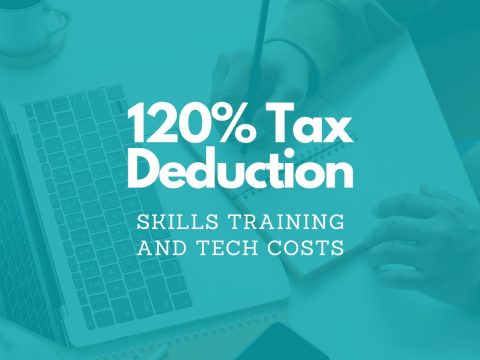Quick tips on tax planning and investment for the new financial year
By Mark Copsey, Director of Allworths Wealth Management
At the end of each tax year, we send out a summary outlining strategies for reducing tax and things to implement before 30 June. However, there are some strategies you can put into place at the beginning of the new tax year to help with your tax situation as well as protecting your income.
Here are 9 quick tips for you to consider:
1) Salary sacrificing
If you are a salaried employee, consider whether salary sacrificing part of your salary into superannuation is an option. The maximum you can contribute is up to $25,000. Remember to take into account your compulsory superannuation amounts. The saving works when your personal tax rate is more than 15%. Basically you will not pay tax on the amount sacrificed from your salary but the superannuation fund will have to pay 15% on the contribution in. First get advice on whether you can afford to lock money away for a potentially long period of time.
2) Super
Now is a good time to look at your superannuation fund, especially so if you’re in a retail fund. Look at performance and importantly the fees they charge. A good starting place is the Canstar ratings of funds. However, please get advice before making any changes and understand the difference between “Balanced” and “Aggressive,” etc.
3) Life insurance
Are your life insurances up to date? There may be tax-effective ways of paying for your premiums through superannuation. Did you know that income protection insurance is tax deductible? While the initial cost may seem high, after you take into account the tax reduction, it may make the premiums more palatable.
4) PAYG withholding – decrease
Most people wait until the end of the year to get their tax refund. If you usually claim motor vehicle expenses or have rental losses in your tax return, resulting in tax refunds, it is possible to have your employer reduce the amount of tax they withhold from you each month by varying your PAYG withholding. I would suggest you get an accountant to assist you with completing the paperwork so you don’t end the year with a shock.
5) PAYG withholding – increase
On the flip side to Point 4, it is possible to ask your employer to increase the amount of tax you pay each month (which you might consider if you usually have a large tax bill at the end of the year). This works well for those who lack discipline in the saving department.
6) Mortgage finance
Money is cheap at the moment. Now is a good time to look at your mortgage rates. Speak to a mortgage broker and get them compare how much you are paying compared to other lending institutions. All it’s going to cost you is an hour of time.
7) Mortgage offset
Linked to Point 6, if you have a mortgage and money in savings, check if it’s possible to have a mortgage offset account. You pay tax on interest earned on your savings but get no tax benefit from interest on your home mortgage.
8) Training
If you love learning and see the benefit to your career progression or business prospects, why not plan ahead and see if there is any work-related training you’d like to do. The cost, if related to your employment, is tax deductible. Better yet, see if your employer will pay for it (as they’ll get a tax deduction)!
9) Depreciation
If you have just bought an investment property (or have not done this), get a depreciation schedule drawn up. We use BMT Tax Depreciation. It’s not very expensive and I’ve not seen a client who hasn’t more than recouped the cost of having one prepared with the tax saved from the depreciation deductions they claimed.
If you have any questions about the above tips, feel free to contact us for a no-obligation discussion.
Allworths Wealth Management is a financial advisory and investment management firm based in Sydney. It forms part of the Allworths group, which traces its origins back to 1897 rural NSW.
Disclaimer
The content of this post is general in nature. Any general advice has been prepared by Allworths Wealth Management Pty Limited AFSL 457 155 without reference to your objectives, financial situation or needs. You should consider the advice in light of these matters and, if applicable, the relevant product disclosure statement before making any decision to invest.




